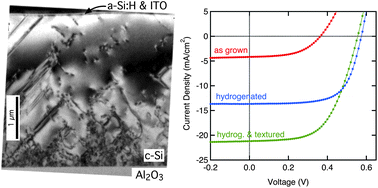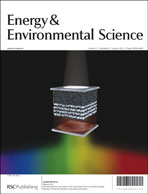Pyramidal light trapping and hydrogen passivation for high-efficiency heteroepitaxial (100) crystal silicon solar cells†
Abstract
We report growth and characterization of heteroepitaxial silicon solar cells on sapphire to demonstrate the promise of heteroepitaxial crystal silicon (c-Si) film photovoltaics on inexpensive substrates coated with chemically inert crystalline


 Please wait while we load your content...
Please wait while we load your content...